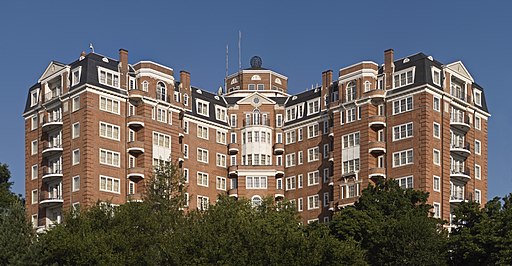At the start of her second term, Mayor Bowser declared a goal of creating 36,000 new housing units by 2025. One third of these units would be affordable to Washingtonians earning less than 80% of the District’s median family income, which is $126,000 per year. For many — including the authors of this letter — both numbers are woefully insufficient to truly address the scale of the District’s affordable housing crisis. Only 36,000 permits for new housing were issued between 2010 and 2019, even though Washington’s population grew by nearly three times that many people during that same period, driving up rents and pushing lower income people out of the city. In other words, the 36,000 target by 2025 must be the floor rather than the ceiling of our ambitions.
It is worth reflecting on how much and how little progress has been made towards the goal, particularly as the Council prepares to debate amendments to the District’s Comprehensive Plan that would allow for taller residential buildings in some areas of the city. According to the city, 14,613 units — 2,099 of which were affordable — have been built since the Mayor’s announcement. This means that the District is already about 41% of its way towards the overall goal of building 36,000 units, but only 17% of its way to building 12,000 new affordable units.
The numbers get more concerning when one looks at where the units have been built — and where they haven’t.
Exclusionary zoning rules that essentially prevent construction of apartment buildings, as well as the lingering effects of racial covenants and redlining, have long limited the availability of affordable housing in the city’s wealthier and whiter areas, particularly west of Rock Creek Park. In addition, litigious homeowners have fought proposals that would build more apartments even where it is legal to do so. The results are predictable — limited housing supply has driven the cost of renting and buying higher and higher each year. A search of Redfin for a home in the Wilson High School attendance zone, which covers Ward 3, turns up not a single choice for less than $1.2 million. Condominium and co-op units are more affordable for homebuyers, but still out of reach for most Washingtonians — the cheapest two-bedroom apartment is just under $400,000.
Recognizing that different parts of the city have historically hosted more affordable housing than others, the District set specific sub-targets for affordable housing production in different parts of the city, including 1,990 units in the Rock Creek West planning area, which encompasses most of Ward 3. But in the two years since the Mayor announced her big housing push, zero — zero — affordable units have been built in Rock Creek West.
Ward 3 residents love to complain about developers and their plans to build “more, more, more.” So you might expect that during this same period, Rock Creek West saw a surge in market-rate development. But you would be wrong — only 271 of the 14,613 units built since the Mayor’s announcement were located in Rock Creek West.
Much more needs to be done, particularly in Ward 3, if we are to meet the Mayor’s housing goals by 2025.
So how can we get there? In a recent piece in these pages, Meg Maguire argues that having the District purchase the defunct Marriott Wardman hotel and convert it to affordable housing could make a huge dent in the city’s goal. We echo calls to seriously explore the possibility of leveraging this dormant asset to add a large amount of housing in an area that sorely needs it.
However, we strongly object to those framing Wardman as a replacement for encouraging more development of multifamily housing in Ward 3. This false choice should be rejected.
Opponents of development in Ward 3 have been on the defensive in recent months. Many in Ward 3 are eager to address the housing crisis and end the exclusionary status quo. In the face of that change in sentiment, density skeptics have latched onto the Wardman as an alternative to constructing more apartments in a transit- and opportunity-rich part of the District. Let’s be clear: While converting the Wardman to apartments would contribute significantly to the District’s supply of affordable housing, the hotel is not a “get-out-of-jail-free card” for Ward 3 NIMBYs opposed to building more apartments near their homes. Moreover, one must be clear-eyed about the obstacles to such a project. Most importantly, Ward 3 Councilmember Mary Cheh, who would likely need to champion the project for it to come to fruition, has expressed concerns about the cost.
“Silver bullet” projects that never come to fruition will not solve the housing crisis. Even if all of the 1,100 hotel rooms at Wardman are converted to affordable housing, we will still be far short of the Mayor’s goal. Given that the goal is even less than what we truly need, we see no reason why the push for more multifamily housing elsewhere in Ward 3 should let up.
The authors are Advisory Neighborhood Commissioners in Ward 3 except for Bob Ward, who is the chairman of Cleveland Park Smart Growth.
CORRECTION (04.29.2021)
Co-author Bob Ward was previously misidentified as an ANC Commissioner.




